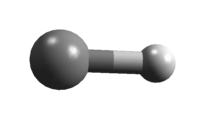|
A combined fit of all available data of all
isotopic species has been carried out;
details are available in
(1) H. S. P. Müller,
2010, Astron. Astrophys. 514, Art. No. L6.
The J" = 0 transition frequencies of
CH+, 13CH+, and
CD+, were reported by
(2) T. Amano,
2010, Astrophys. J. 716, L1.
Additional rovibrational transitions between the electronic
X and A states of four isotopologs as reported in (1)
were also used in the fit. The CH+ data were
taken from
(3) A. Carrington and D. A. Ramsay,
1982, Phys. Scr. 25, 272;
and from
(4) R. Hakalla, R. Kepa, W. Szajna, and M. Zachwieja,
2006, Eur. Phys. J. D 38, 481.
13CH+, CD+, and
13CD+ data were taken
from
(5) Z. Bembenek,
1997, J. Mol. Spectrosc. 181, 136;
from
(6) Z. Bembenek, H. Cisak, R. Kepa,
1987, J. Phys. B 20, 6197;
and from
(7) Z. Bembenek,
1997, J. Mol. Spectrosc. 182, 439;
respectively.
Predictions should be viewed with some caution;
considerable caution is advised for transitions
beyond J" = 10.
A transition dipole moment value was calculated
ab initio by
(8) B. Follmeg, P. Rosmus, and H.-J. Werner,
1987, Chem. Phys. Lett. 136, 562.
While the transition dipole moment is probably quite
reliable it is not known if the intensities are
modeled appropriately by only this transition
dipole moment.
|
